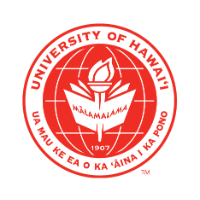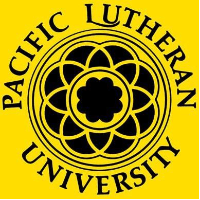 From sunny beaches to snowy mountains to rainy coasts, there is perhaps no region in the US more diverse than the Far West. In addition to a variety of landscapes, the Far West is home to a variety of schools. With all there is to see, you don’t want to miss out on these incredible colleges in the Far West!
From sunny beaches to snowy mountains to rainy coasts, there is perhaps no region in the US more diverse than the Far West. In addition to a variety of landscapes, the Far West is home to a variety of schools. With all there is to see, you don’t want to miss out on these incredible colleges in the Far West!
To qualify as a Hidden Gem, a school must meet the following requirements:
- Receive fewer than 5,000 applications per year
- Have fewer than 7,000 undergraduate students
- Offer 5 or more unique majors
- Have a 10% acceptance rate or higher
We’re considering the following states as part of the far west: Alaska, California, Hawaii, Nevada, Oregon, and Washington.
*Note: We feature the top 3 Hidden Gems per state, however not all states had 3 schools that met all of our criteria, and so may only feature one or two.
Hidden Gems in the Far West
ALASKA
Alaska Pacific University, also known as APU, was originally called the Alaska Methodist University when established in 1957. It is right next to the University of Alaska Anchorage and Alaska Native Medical Center. APU offers up to the doctor’s degree level of education. 98% of students receive institutional financial aid to help cover costs.
Location
Anchorage, AK
Institution Type
Private
Student Enrollment
529
Known as UAF or simply Alaska is a flagship, land grant, space grant, and sea grant school. Blue and gold are the official colors of UAF and the mascot is Nanook, a mighty polar bear of Inuit legend. Ice hockey, skiing, track, and volleyball are popular sports for the Nanooks. There is a 10 to 1 student to faculty ratio.
Location
Fairbanks, AK
Institution Type
Public
Student Enrollment
7,179
The smallest in the trio of University of Alaska schools, Southeast is located in the state capital. Southeast is further divided into three campuses, Juneau, Sitka, and Ketchikan. Southeast’s mascot is Spike the Humpback Whale. Though Southeast offers up to the master’s degree, 88% of students study at the undergraduate level.
Location
Juneau, AK
Institution Type
Public
Student Enrollment
2,150
Compare rate offers from about 8 lenders
Variable APR from 4.50% - 17.99% with auto-debit
Learn More
CALIFORNIA
Harvey Mudd College has under 1,000 students and offers programs only in science and engineering. It has a 14% acceptance rate, 97% first year graduation rate, and an 8 to 1 student to faculty ratio. Part of the Claremont Colleges, their colors are black and gold. The men’s teams are known as the Stags and the women are known as the Athenas.
Location
Claremont, CA
Institution Type
Private
Student Enrollment
904
A member of the Claremont Colleges, Scripps College is a private liberal arts women’s school. It’s known for its historic campus as well as its extensive curriculum. The campus is currently listed in the National Register of Historic Places and often gets mentioned for its beautiful grounds. Biology, Psychology, and Political Science and Government are common majors.
Location
Claremont, CA
Institution Type
Private
Student Enrollment
1,109
Pitzer College accepts only 17% of applicants, making it a highly selective school. A majority of these students come from California, Washington, and Oregon. It is one of the Claremont Colleges and focuses on media studies, behavioral studies, social sciences, and international programs. Environmental Science, Psychology, and Economics are popular majors.
Location
Claremont, CA
Institution Type
Private
Student Enrollment
1,086
HAWAII
Chaminade University of Honolulu accepts just under 90% of applicants. With an 86% first year retention rate, the school has an 11 to 1 student to faculty ratio. Top majors include Registered Nursing, Criminal Justice, and Psychology. Total, the school offers 23 fields of study to undergraduates.
Location
Honolulu, HI
Institution Type
Private
Student Enrollment
2,167
A liberal arts school, UH Hilo’s most popular majors include Registered Nursing, Pharmacy, and Psychology. Red and black are the colors of the Vulcans, who compete in the PacWest conference. Students come from all over the country to study at UH Hilo, though 67% are from the state of Hawaii itself.
Location
Hilo, HI
Institution Type
Public
Student Enrollment
3,372
One of ten campuses in the University of Hawaii system, West Oahu became a 4-year school in 2007. The mascot is a pueo, a type of owl native to Hawaii. There is an 18 to 1 student to faculty ratio and a 76% first year retention rate at West Oahu. Business Administration is by far and away the most popular major.
Location
Kapolei, HI
Institution Type
Public
Student Enrollment
3,049
NEVADA
Nevada State College, although only opening in 2002, was Nevada’s first state college. Accepting over 90% of applicants in 2020, 78% of students stayed on after completing their freshman year. Registered Nursing is by far the most popular major at the school. Their mascot is a scorpion named Scotty.
Location
Henderson, NV
Institution Type
Public
Student Enrollment
5,584
“Wisdom, Responsibility, Freedom” is the motto of Sierra Nevada University. Also known as SNU, the school has a near even split between undergraduate and graduate students. Its campus is located between Crystal Bay and a ski resort. SNU has a 46% acceptance rate and does not charge for undergraduate applications.
Location
Incline Village, NV
Institution Type
Private
Student Enrollment
755
OREGON
Willamette University is the oldest university found in the western part of the United States. It was founded in 1842 as the Oregon Institute. Today, the school accepts about 80% of students. There are about 330 athletes known as the Bearcats. Wearing cardinal and old gold, they participate in 20 different varsity sports in the Northwest Conference.
Location
Salem, OR
Institution Type
Private
Student Enrollment
2,179
Linfield University’s official school colors are purple and cardinal. Their sports teams are known as the Wildcats who compete in the Northwest Conference. 100% of the students at the McMinnville campus receive financial aid from the school to help cover costs. Linfield University also has a second campus in Portland, Oregon.
Location
McMinnville, OR
Institution Type
Private
Student Enrollment
1,414
Pacific University has four total campuses, though the main one is in Forest Grove, OR. Offering up to a doctor’s degree, Pacific University has a student body that is 51% graduate students and 49% undergraduates. Biology is the most popular major. Only 41% of incoming students are from Oregon, with many coming from neighboring states California and Washington.
Location
Forest Grove, OR
Institution Type
Private
Student Enrollment
3,832
WASHINGTON
Some who have attended Whitman College in the past include Adam West, Shane Johnson, Nate Cohn, and NASA astronaut Dorothy Metcalf-Lindenburger. Biology, Experimental Psychology, and Political Science are popular majors among students. The school has a cozy 9:1 student to faculty ratio and a 4 year graduation rate of 79%.
Location
Walla Walla, WA
Institution Type
Private
Student Enrollment
1,579
Whitworth University’s motto is “Education of Mind and Heart.” It should come as no surprise, then, that the top three majors are Biology, Psychology, and Elementary Education. 84% of students return after freshman year and 77% are expected to graduate within 6 years. Whitworth’s colors are crimson and black.
Location
Spokane, WA
Institution Type
Private
Student Enrollment
2,814
Pacific Lutheran University has a noble motto - “Educating for Lives of Thoughtful Inquiry, Service, Leadership, and Care.” Business, Nursing, Kinesiology, Psychology, and Biology are the top five most popular majors. Notable alumni include Rosanna Pansino, Marissa Meyer, and Michael Peterson.
Location
Tacoma, WA
Institution Type
Private
Student Enrollment
3,062
Interested in any of these schools? Check out College Raptor’s free match tool to see if they’re a good fit for you!
Methodology
Colleges are ranked based on a combination of factors, including graduation rates, campus diversity, endowment per student, and other data as reported via the National Center for Education Statistics (NCES) for the most recently-available enrollment year. Some colleges may have been excluded from rankings based on certain criteria, including specialization and classification. Learn about our full methodology.
 From sunny beaches to snowy mountains to rainy coasts, there is perhaps no region in the US more diverse than the Far West. In addition to a variety of landscapes, the Far West is home to a variety of schools. With all there is to see, you don’t want to miss out on these incredible colleges in the Far West!
From sunny beaches to snowy mountains to rainy coasts, there is perhaps no region in the US more diverse than the Far West. In addition to a variety of landscapes, the Far West is home to a variety of schools. With all there is to see, you don’t want to miss out on these incredible colleges in the Far West!






















